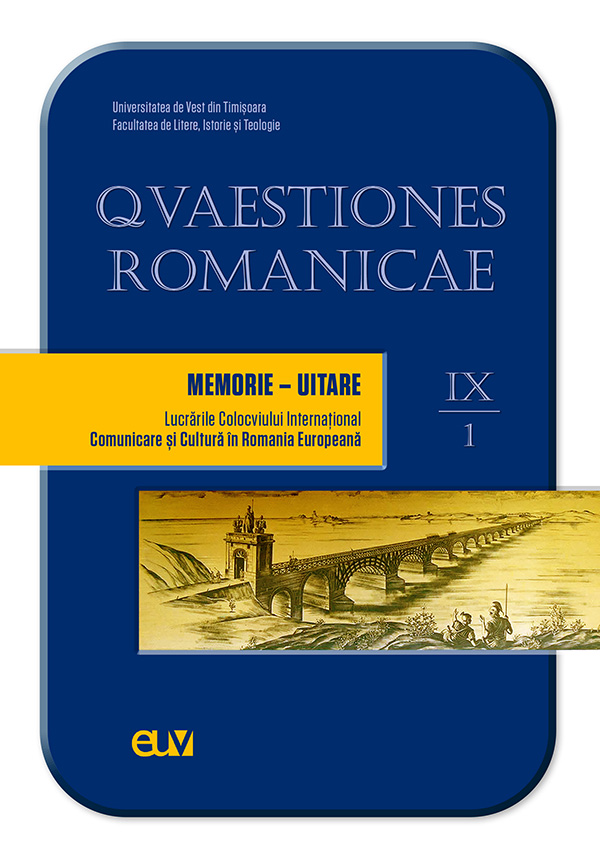La mémoire de l’histoire. Le destin de la famille Török (Váradi): la noblesse oubliée
Abstract: (Histories from the shadow of memory. Török (Váradi) family between nobility and forgetfulness) The enterprise of giving the present its history and destiny braided with forgetfulness of a few noble Hungarian families are part of an attempt to recuperate the memorial heritage of a lost world. Some Hungarian historians of the XIXth century mention in their writings the aristocratic family Török. Pál Török received the title of armalist nobleman from prince G. Bethlen. By mid XVIIIth century, his heirs, József, István and Ferenc had their privileges renewed. With the dissipation of Duke of Modena's estate, the Erarium decided to sell its domains to noblemen willing to invest in the economical development. In 1799, the family bought the estate of Dezna, with the village of Buhani, in today's ARAD county. In order to exploit its natural resources, they built the iron forges, started the fish pond, contributed to maintaining the infrastructure in the Sebiș-Moneasa area, supported the Roman-Catholic church and school. For a century, the aristocratic family Török, of which also descended Török Gábor (1800-1868), mayor of ARAD, placed its seal on the historic development of Dezna and its surroundings. The tracks of their presence in the area were lost through time. Local documents stock informations about the old Roman-Catholic cemetery, where some of them were buried. Comunist times let forgetfulness lay over the history and destiny of old times nobility.
Keywords: Arad, aristocratic, Török family, history, memory.
Résumé: Le processus de restitution au temp présent l'histoire et le destin mêlé à l'oubli de certaines familles de la noblesse hongroises s'inscrit dans la démarche de récupérer le patrimoine mémoriel d'une époque lointaine. Certains historiens hongrois du XIXe siècle mentionnent dans leurs écrits la famille nobiliaire Török. Pál Török a reçu le titre de noble armistice du prince G. Bethlen. Au milieu du XVIIIe siècle, les descendants de la famille, József, István et Ferenc, voient leurs privilèges renouvelés. Avec l'abolition du domaine du duc de Modène, l’Erario a décidé de la vente de ses domaines aux nobles prêts à investir dans le développement économique de la région. En 1799, la famille acquiert le domaine Dezna, avec le village de Buhani, situé dans l’actuel comté d'Arad. Pour l'exploitation des ressources naturelles, ils ont construit les fonderies de fer, aménagé l'étang à poissons, contribué au soutien des infrastructures dans la région de Sebiș-Moneasa, soutenu l'église et l'école romaine-catholique. Pendant un siècle, la famille noble de Török, dont le maire d'Arad, Török Gábor (1800-1868), a marqué de son empreinte le développement historique de Dezna et de ses environs. Les traces de leur présence dans la région se sont perdues dans la nuit des temps. Les monuments commémoratifs locaux gardent des informations sur l'ancien cimetière romain-catholique, où certains d'entre eux ont été enterrés. L'époque communiste à poussé à l’oublie l'histoire et le destin de l'ancienne aristocratie.
Mots-clés: Arad, familleTörök, histoire, destin, mémoire, noblesse.
